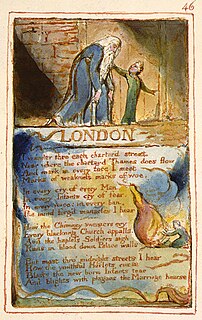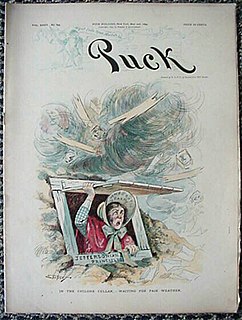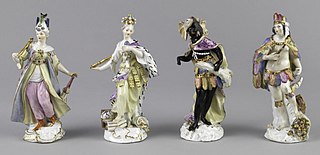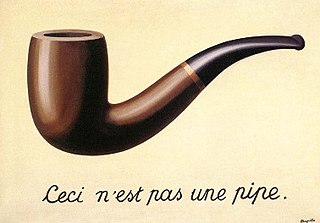 W
WAs a literary device or artistic form, an allegory is a narrative or visual representation in which a character, place, or event can be interpreted to represent a hidden meaning with moral or political significance. Authors have used allegory throughout history in all forms of art to illustrate or convey complex ideas and concepts in ways that are comprehensible or striking to its viewers, readers, or listeners.
 W
WIn rhetoric, an anaphora is a rhetorical device that consists of repeating a sequence of words at the beginnings of neighboring clauses, thereby lending them emphasis. In contrast, an epistrophe is repeating words at the clauses' ends. The combination of anaphora and epistrophe results in symploce.
 W
WAn apologia is a formal defense of an opinion, position or action. The term's current use, often in the context of religion, theology and philosophy, derives from Justin Martyr's First Apology and was later employed by John Henry Newman's Apologia Pro Vita Sua of 1864, which presented a formal defense of the history of his Christian life, leading to his acceptance by the Catholic Church in 1845. In modern usage, apologia describes a formal defense and should not be confused with the sense of the word 'apology' as an expression of regret; however, apology may mean apologia, depending on the context of use.
 W
WIn rhetoric, chiasmus or, less commonly, chiasm, is a "reversal of grammatical structures in successive phrases or clauses – but no repetition of words".
 W
WThe word ekphrasis, or ecphrasis, comes from the Greek for the written description of a work of art produced as a rhetorical exercise, often used in the adjectival form ekphrastic. It is a vivid, often dramatic, verbal description of a visual work of art, either real or imagined. In ancient times, it referred to a description of any thing, person, or experience. The word comes from the Greek ἐκ ek and φράσις phrásis, 'out' and 'speak' respectively, and the verb ἐκφράζειν ekphrázein, 'to proclaim or call an inanimate object by name'.
 W
WAn elevator pitch, elevator speech, or elevator statement is a short description of an idea, product, or company that explains the concept in a way such that any listener can understand it in a short period of time. This description typically explains who the thing is for, what it does, why it is needed, and how it will get done. Finally, when explaining an individual person, the description generally explains one's skills and goals, and why they would be a productive and beneficial person to have on a team or within a company or project. An elevator pitch does not have to include all of these components, but it usually does at least explain what the idea, product, company, or person is and their value.
 W
WIrony, in its broadest sense, is a rhetorical device, literary technique, or event in which what on the surface appears to be the case or to be expected differs radically from what is actually the case.
 W
WJuxtaposition is an act or instance of placing two elements close together or side by side. This is often done in order to compare/contrast the two, to show similarities or differences, etc.
 W
WA metaphor is a figure of speech that, for rhetorical effect, directly refers to one thing by mentioning another. It may provide clarity or identify hidden similarities between two different ideas. Metaphors are often compared with other types of figurative language, such as antithesis, hyperbole, metonymy and simile. One of the most commonly cited examples of a metaphor in English literature comes from the "All the world's a stage" monologue from As You Like It:
 W
WMetonymy is a figure of speech in which a thing or concept is referred to by the name of something closely associated with that thing or concept.
 W
WA parable is a succinct, didactic story, in prose or verse, that illustrates one or more instructive lessons or principles. It differs from a fable in that fables employ animals, plants, inanimate objects, or forces of nature as characters, whereas parables have human characters. A parable is a type of metaphorical analogy.
 W
WPersonification occurs when a thing or abstraction is represented as a person, in literature or art, as an anthropomorphic metaphor. The type of personification discussed here excludes passing literary effects such as "Shadows hold their breath", and covers cases where a personification appears as a character in literature, or a human figure in art. The technical term for this, since ancient Greece, is prosopopoeia. In the arts many things are commonly personified. These include numerous types of places, especially cities, countries and the four continents, elements of the natural world such as the months or Four Seasons, Four Elements, Four Winds, Five Senses, and abstractions such as virtues, especially the four cardinal virtues and seven deadly sins, the nine Muses, or death.
 W
WA rhetorical question is one for which the questioner does not expect a direct answer: in many cases it may be intended to start a discourse, or as a means of displaying or emphasize the speaker's or author's opinion on a topic.
 W
WThe sentence "Rose is a rose is a rose is a rose." was written by Gertrude Stein as part of the 1913 poem "Sacred Emily", which appeared in the 1922 book Geography and Plays. In that poem, the first "Rose" is the name of a person. Stein later used variations on the sentence in other writings, and "A rose is a rose is a rose" is among her most famous quotations, often interpreted as meaning "things are what they are", a statement of the law of identity, "A is A". In Stein's view, the sentence expresses the fact that simply using the name of a thing already invokes the imagery and emotions associated with it, an idea also intensively discussed in the problem of universals debate where Peter Abelard and others used the rose as an example concept. As the quotation diffused through her own writing, and the culture at large, Stein once remarked, "Now listen! I'm no fool. I know that in daily life we don't go around saying 'is a ... is a ... is a ...' Yes, I'm no fool; but I think that in that line the rose is red for the first time in English poetry for a hundred years.".
 W
WA slippery slope argument (SSA), in logic, critical thinking, political rhetoric, and caselaw, is an argument in which a party asserts that a relatively small first step leads to a chain of related events culminating in some significant effect. The core of the slippery slope argument is that a specific decision under debate is likely to result in unintended consequences. The strength of such an argument depends on whether the small step really is likely to lead to the effect. This is quantified in terms of what is known as the warrant. This type of argument is sometimes used as a form of fearmongering in which the probable consequences of a given action are exaggerated in an attempt to scare the audience, although, differentiation is necessary, since, in other cases, it might be demonstrable that the small step will likely lead to an effect.
 W
WIn public relations and politics, spin is a form of propaganda, achieved through knowingly providing a biased interpretation of an event or campaigning to influence public opinion about some organization or public figure. While traditional public relations and advertising may manage their presentation of facts, "spin" often implies the use of disingenuous, deceptive, and manipulative tactics.
 W
WThe Treachery of Images is a 1929 painting by Belgian surrealist painter René Magritte. It is also known as This Is Not a Pipe and The Wind and the Song. Magritte painted it when he was 30 years old. It is on display at the Los Angeles County Museum of Art.